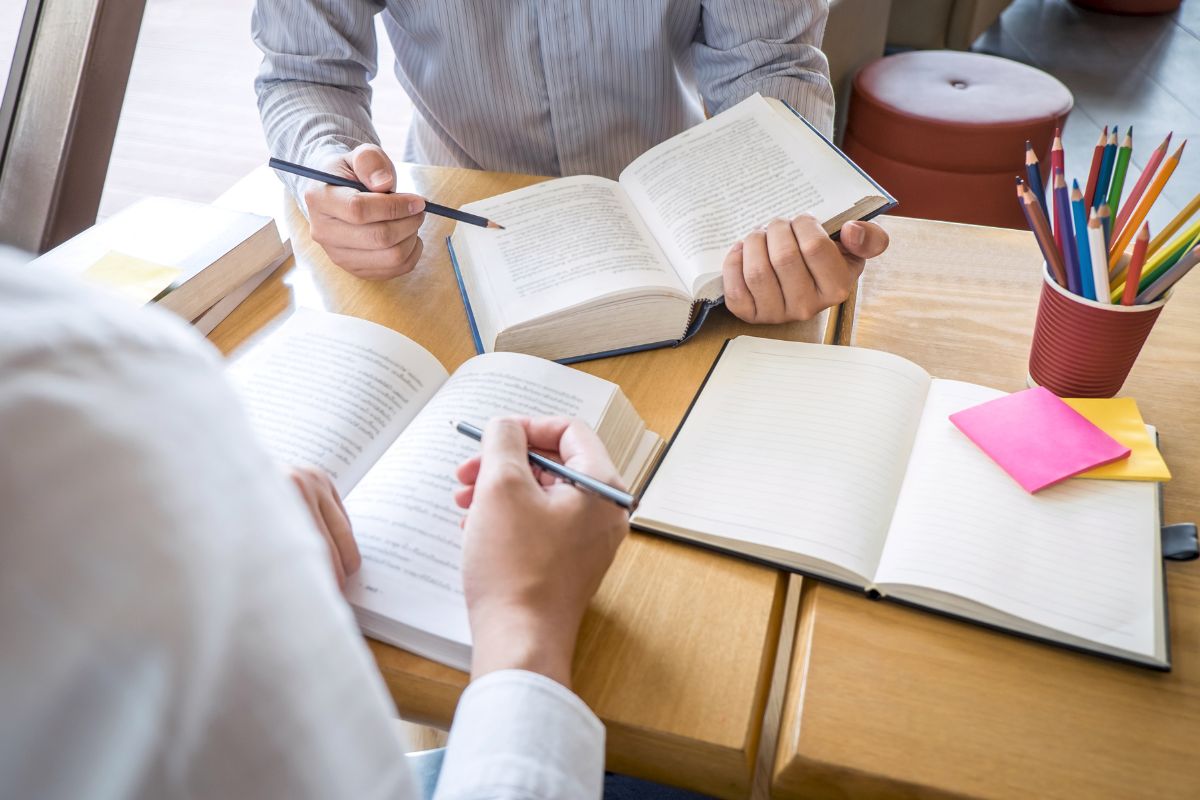A well-made lesson plan lets teachers set goals for their students that they can reach and then keep track of how each student is doing. Teachers must be able to organize their lessons to make sure all goals are met and that the students understand the material. Start by outlining your objectives, content, materials, and procedures for each lesson.
How to Design an Effective Lesson Plan
Standard lesson plans offer teachers a framework to incorporate invaluable instruction into their curriculum and across every grade level.
1. Begin with a clear objective
Teachers should establish one or two clear learning objectives to measure student progress before writing any lesson plan. Establishing learning objectives also helps teachers focus on the topic and prioritize activities. For example, a lesson plan on story writing may have the objective of “students will be able to write their own stories with a clear beginning, middle, and end.” Don’t miss this step, as it will help determine the following. For example, whether you’ll need to use worksheet templates for teachers from StoryboardThat or try something different.
Once the goals are set, the teacher should think about how they will teach in order to help the students reach those goals. Many different types of instructional strategies can be used, such as direct instruction, project-based learning, and inquiry-based learning. Each instructional strategy has its own set of advantages and disadvantages, so it is important for teachers to consider which method works best for their students.

2. Incorporate a variety
A lesson plan should incorporate various teaching methods and materials to keep students engaged with the material. From lectures to hands-on activities to multimedia presentations, it’s important for student teachers to mix up their instruction in order to reach all their learners effectively. When selecting materials for a lesson plan, it’s important to look not only at what types of activities would interest students but also consider the objectives and learning outcomes that need to be met. For instance, if the goal is to teach students about the writing process, using visuals like graphic organizers might be helpful. Using interesting activities like writing games or group work can also help students remember what they’ve learned and make the lesson more fun.
3. Assess progress:
After the instruction is complete, it’s important for teachers to assess student progress and determine whether the objectives have been met. To measure student understanding, the teacher can use various assessment methods, such as quizzes, tests, or even observation. Additionally, teachers should give students feedback on their performance, so they know what areas need improvement.
Finally, it’s important for teachers to reflect on the lesson plan and consider ways they can improve their instruction in the future. Reflection is an important part of teaching because it helps teachers figure out where to improve and make changes to their plans. By taking the time to analyze their lesson plans and make adjustments where necessary, teachers can be sure that their instruction is effective and that students are learning the material.
By following these steps, student teachers can confidently write and carry out a good lesson plan. They can improve at making effective lessons for any subject or grade level with practice and time.

Benefits of a Lesson Plan
Of course, it is possible to have a successful lesson without a plan. However, it is rather difficult and requires lots of experience. Not every teacher will be able to achieve success without thorough preparation. Here are the main advantages of spending your time preparing a lesson plan:
- Helps teachers stay organized and on track
- Allows teachers to measure student progress
- Allows teachers to modify instruction when needed
- Ensures students are learning the material in a meaningful way
- Increases engagement and understanding of the material.
Teachers can make sure their lessons are effective and interesting for their students by following these steps and adding variety to their lesson plans. With time and practice, teachers will get better at planning lessons and be able to make lessons that help students learn the most.
Bottom Line
Teachers can be sure that their lessons will be effective and interesting for their students if they take the time to make a detailed lesson plan. Teachers can get better at planning lessons and making effective lessons for any subject or grade level with practice and time. A lesson plan is essential for student success, as it helps teachers track progress, modify instruction when needed, and ensure that students are learning the material in the most effective way.












